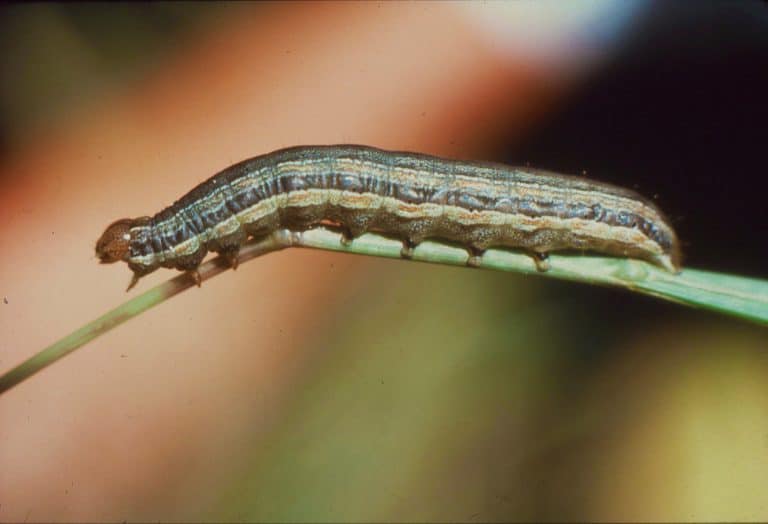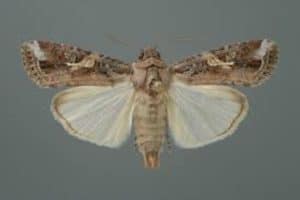
News

The Lawn Army Has Assembled!
March 9, 2023
Armyworm
Spodoptera Mauritia
Armyworm have assembled and are on the march! Armyworm can scalp an entire lawn in just a few days. Make sure you take action urgently if you see these pests in large numbers ‘marching’ their way across your lawn.
What are Armyworm?
Armyworm are a caterpillar pest that can devastate a lawn within a matter of days. As their name suggests, during the larval stages they move together in large numbers ‘marching’ their way across foliage exhausting plant material as they go. During the day they can be found grouped together hiding near the stem of the grass near the soil. You may notice your lawn appears completely scalped of green leaf growth with an almost uniform line of damage that is continuing to spread rapidly. Once the lawn is stripped bare the Armyworms then move on to find another source of food. Armyworm unfortunately will have a preference for healthy lawns, these will be the most appealing to them in the street, so stay alert if that lawn is yours!
The Armyworm evolves through 6 to 9 stages, continuing to increase in size before being fully developed at around 40mm in length. The lifecycle is about 30 to 40 days, which means they can occur several times over summer and autumn.
At maturity, the caterpillar works its way into the soil and pupates before emerging as a moth after approximately 10 to 14 days. These moths are pale brown and identifiable by a distinct white spot in the middle of their wing. The moths then lay eggs that are sometimes visible on house eaves or similar areas around the home.
- 2mm to 40mm in length (mature caterpillars are 30mm to 40mm long)
- 3 prominent white or cream stripes running down the back and sides of their bodies — these are most obvious where they start on the thoracic segment (‘collar’) immediately behind the head and are particularly apparent in larvae that are longer than 10mm
- No obvious hairs and are smooth to touch
- Curl-up when disturbed
- 4 abdominal prolegs
How to detect Armyworm
A good way to start with for detecting Armyworm is by doing some exploring during the evening. Kneel down onto your lawn at the edge of where damage has occurred. Spread the grass profile open with your hand and slowly run a torch across looking for caterpillars feeding or moving with the profile of the lawn.
Another option is to pour a bucket of soapy water (mix a small amount of dishwashing detergent with water), over the lawn in a small area towards the edge of a struggling or scalped lawn area. Then observe the area over the next 10 minutes or so to check for the Armyworm caterpillars which should rise to the surface to breathe if present. This is best undertaken at dusk when the Armyworm are likely to be most active.
The presence of the moth itself is also an indicator that Armyworm may be active in your area. If you notice moth activity around your home, congregating near lights like the one in the image below, this is a sign that they may be emerging from your lawn. You can then undertake the detection methods above to confirm.

How to Treat Armyworm
Treating Armyworm is quite simple, with the right products. It’s important you act as quickly as possible to ensure the damage they cause is limited.
Insecticide Application
Apply a fast knock down liquid insecticide to the leaf of a recently mown lawn during the afternoon. Repeat applications may be necessary over the coming weeks to ensure the Armyworm is completely eradicated. When the Armyworm become active again in the evening they will eat at the recently treated leaf. Granular grub treatment products can also be used, but for faster efficient treatment a liquid option will provide the best results.
Treatment options include:
- Battle Insecticide
- Grub Guard
- Richgro Grub Killa Hose On
- Amgrow Patrol Lawn Pest Control